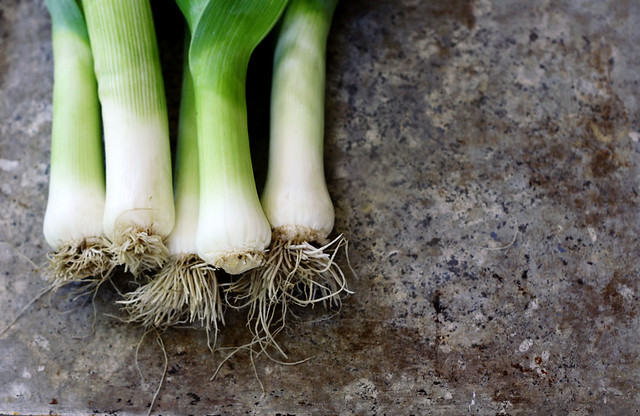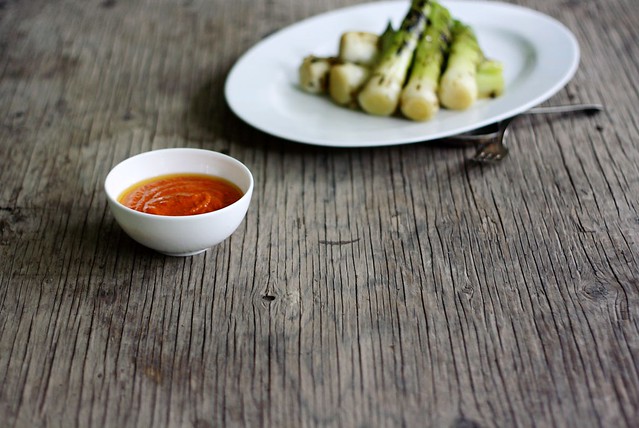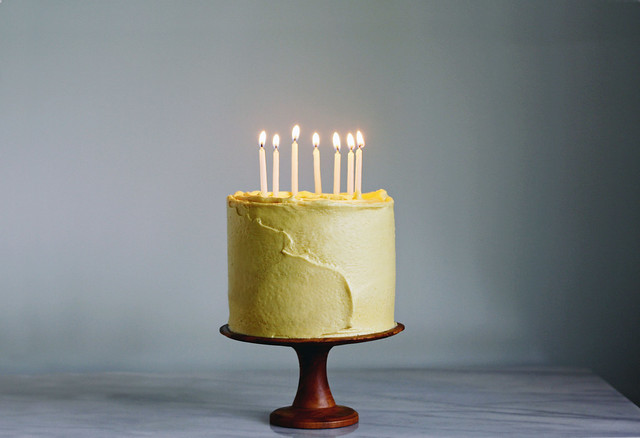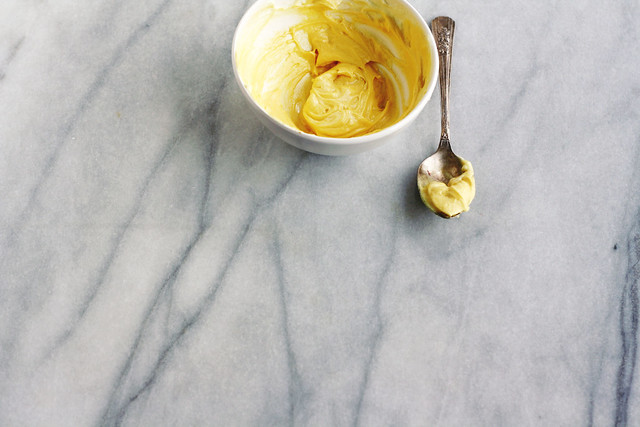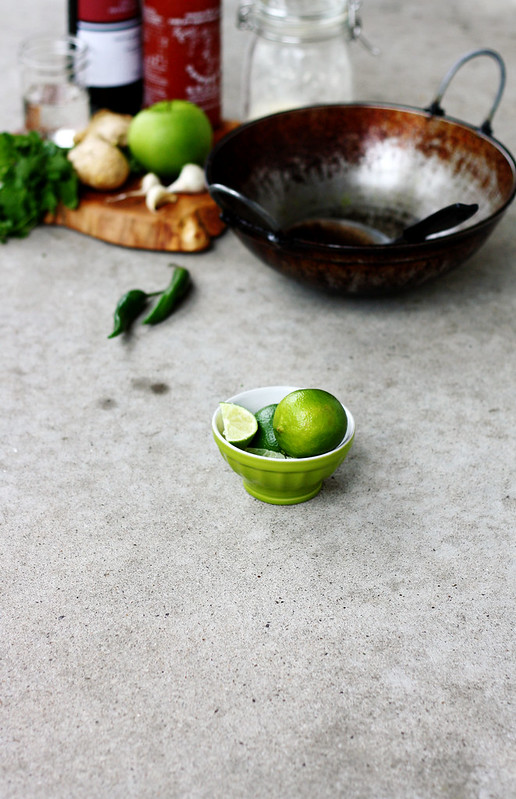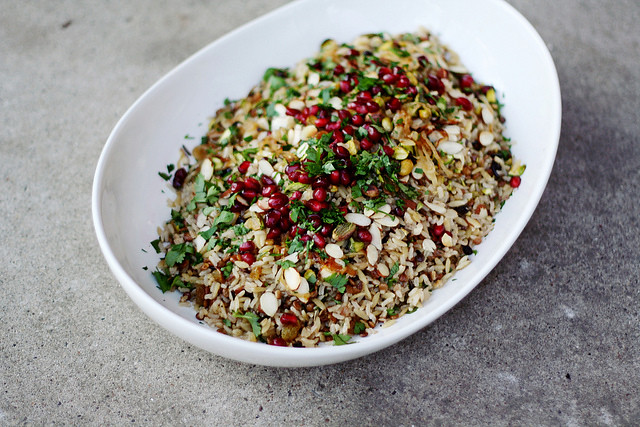Of smoke, sweet and spice
 Wednesday, May 23, 2012 at 12:05PM
Wednesday, May 23, 2012 at 12:05PM The day before yesterday was Victoria Day here in Canada, the unofficial kickoff to our summer. Next Monday is Memorial Day in the United States, the unofficial launch of summer down there. So for my friends to the south, I feel like I'm giving you a sneak peek at the answers to next week's pop quiz, and for all the rest of you, I feel like I'm letting you know about something good, as I'm keen on Romesco sauce for the hot months ahead, just like I'm a keen on all of you, year round.
Romesco is a Catalan sauce; an intensely-flavourful slurry of roasted peppers (ideally nyoras, pimiento choricero), thickened with toasted bread and nuts (usually almonds), ruddy with paprika. It is a fair partner to grilled fish and meats, but it's really in its niche alongside vegetables.
The Spanish know this, and so Romesco is the choice accompaniment to the mild green onions called calçots as part of their annual celebration of their harvest. This festival, the calçotada, involves grilling bundled calçots on steel grates over open fires until their exteriors are blackened and crisp. The onions are then wrapped in newsprint and left to steam. Once the packages are opened, and the charred exterior of each onion gets peeled back to expose the tender flesh beneath before they're dragged, bendingly, through Romesco sauce. You eat the onions whole, with head titled back and messy fingers, in a perfect bite of smoke, sweet and spice.
Leeks are not the same as calçots, even though the latter does look an awlful lot like a minature version of the former, but they're what came in our CSA last week. Leeks require extra care in their preparation — they prefer a gentle, attentive hand, and an equally-gentle cooking method. In Tender, Volume 1 (UK General Books, 2009) and elsewhere, Nigel Slater offers his thoughts on how best to handle a leek, specifially using an onion in comparison. In Tender he puts forward:
"Leeks are a little more demanding of the cook. Whereas an onion caught around the edges by a bit of overcooking will take on a welcome rustic note, a leek sorched is a leek ruined."
As you might have already guessed, I agree. When faced with high, direct heat, leeks can seize up and go brittle, losing all of their supple pleasure. And so, in my want for a grilled leek, I began with steaming them first (though boiling in well-salted water would have done as well). I cooked them until they flopped heavily from the steamer basket, making sure that the heat had reached their centres. Then we were off to the grill for a quick blast of flame. I borrowed the finish from the calçotada, and carefully, tightly, packed the hot leeks in a double layer of newsprint. After a few minutes we tore open the parcels, removed the tiger-striped exteriors of the leeks, and dressed them with Romesco, tucking in with forks and knives in hand. The leeks were luxurious, moodier and darker than if we'd braised them, edged with the presence of smoke without the harshness of char.
This long weekend, and for the next one, and maybe the one after that, it'll be how we're doing things. It's going to be a great summer.
Romesco and grilled leeks
The Romesco sauce is also wonderful with potatoes — fried, roasted or grilled. We've dipped steamed asparagus in it as well, without complaint.
Ingredients
4 medium red bell peppers
2 plum tomatoes
1 medium yellow onion, unpeeled
3 tablespoons olive oil, divided
3 cloves garlic, unpeeled
1 dried ancho chili
1 1-inch slice white country bread, with crusts removed
1/2 cup sliced almonds
2 teaspoons sweet paprika
1 teaspoon smoked paprika
1/4 cup extra-virgin olive oil, or thereabouts
2 tablespoons sherry vinegar, plus extra
Kosher salt, to taste
12 small leeks
1 teaspoon olive oil
Kosher salt and freshly-ground black pepper to taste
Smoked salt to serve, optional
Preheat oven to 400°F (200°C).
On a rimmed baking sheet, toss the peppers, tomatoes and onion in about a teaspoon of olive oil. Roast for 40 minutes, turning every 10 minutes or so. Add the garlic cloves to the sheet pan and roast for 10 minutes more. Remove the vegetables from the oven to a bowl. Cover with clingfilm and set aside for 15 minutes.
Meanwhile, heat 1 teaspoon of oil in a heavy skillet over medium-high heat. Fry the ancho chili in the hot oil until it darkens and puffs, about 30-45 seconds. Remove the chili to a small bowl and cover with hot water. Leave to soften for about 30 minutes.
In the same skillet, heat the half the remaining oil over medium heat. Tear the bread into chunks. Add the bread and almonds to the pan and sauté until golden, around 2 minutes. Remove the bread and almonds to the bowl of a food processor.
Stem, peel, seed and roughly chop the peppers, tomatoes and onion. Heat the remaining oil in the skillet over medium heat. Add the peppers, tomatoes and onion to the pan with any accumulated juices. Fry for about 30 seconds, then add both paprikas, stirring often. Cook for 1 minute more. Remove the pepper mixture to the food processor, scraping out any bits that have stuck to the pan.
Peel the garlic. Stem and seed the softened chili, chop it into chunks, and add it to the processor bowl with the garlic.
Purée the vegetables in the processor with 1/4 cup extra-virgin olive oil and the sherry vinegar. Scrape down the sides of the bowl and run the machine again. It might be necessary to drizzle in more extra-virgin olive oil to get the sauce smooth. Stop the processor and season with kosher salt and additional sherry vinegar if needed. Pulse once or twice. Can be made 1 day ahead. Cover and refigerate. Bring Romesco to room temperature before using.
For the leeks, trim the root ends, but leave the layers attached (extra root can be trimmed away before eating, better to err on keeping the end intact). Trim the darkest green ends from the top. Remove the any tough outer layers from the stalk. Starting about 1-inch from the end, cut the leek lengthways through its middle to its tip, as shown here. Rinse the leeks under cold running water, gently opening up the layers, to wash away any dirt. Leave the leeks to soak in a bowl of cold water, swishing them now and again dislodge any persistent grit.
Bring about 1-inch of water to boil in a large pot. Place the prepared leeks in a steamer basket and steam, covered, for about 10 minutes, or until tender. Using tongs, remove the leeks from the steamer to a clean kitchen towel. Blot the leeks dry, then place them in a bowl. Drizzle them with a bit of olive oil and season with salt and pepper.
Preheat a medium-hot grill. Grill the leeks, turning often, until well-marked on all sides, around 5 minutes total. Set the leeks onto a large piece of newspaper or parchment paper, and wrap tightly. Let steam for 5 minutes. Carefully open the package and strip away the crisp outer layer of the leek. Serve warm or at room temperature, drizzled with a bit of olive oil and a sprinkle of smoked salt. Pass the Romesco sauce alongside.
Serves 6.
Note:
- I like the combination of sweet and hot paprikas. If you don't have both on hand, one or the other is fine, adjusting accordingly.
- In a pinch, I've used jarred roasted piquillo peppers instead of roasting my own. If following suit, you'll need about 1 1/2 cups of peppers.
- As it sits, the Romesco will tighten up considerably; you might need to loosen it with some extra-virgin olive oil before serving.
- Leftover leeks and Romesco makes for a fine breakfast sandwich: slice the leeks into a small pan over low heat with a knob of butter. Warm them gently, then place them atop a piece of grilled bread smeared with Romesco. Fry an egg in your pan, plunk it on the leeks, with a skinny slice of Manchego and the another slice of toast. Eat.

















